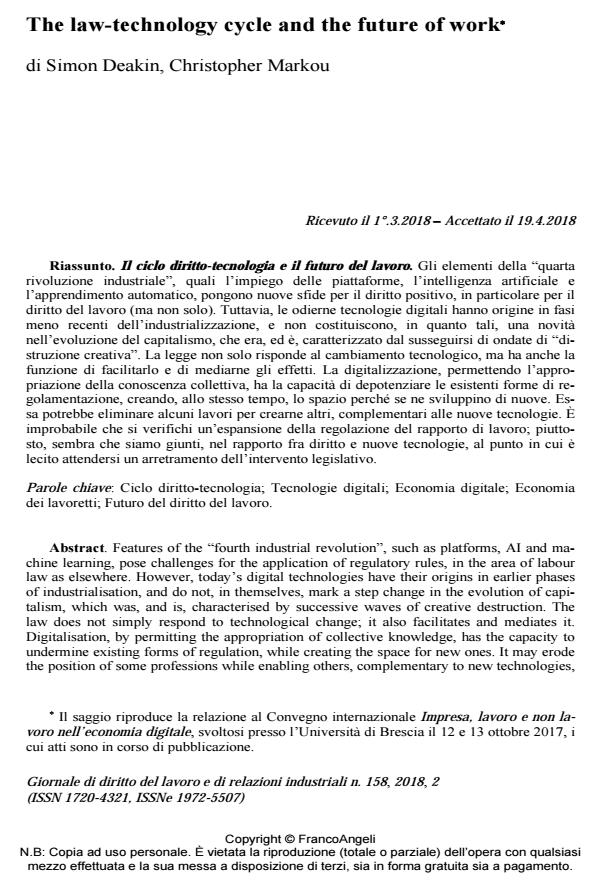The law-technology cycle and the future of work
Journal title GIORNALE DI DIRITTO DEL LAVORO E DI RELAZIONI INDUSTRIALI
Author/s Simon Deakin, Christopher Markou
Publishing Year 2018 Issue 2018/158
Language English Pages 18 P. 445-462 File size 232 KB
DOI 10.3280/GDL2018-158009
DOI is like a bar code for intellectual property: to have more infomation
click here
Below, you can see the article first page
If you want to buy this article in PDF format, you can do it, following the instructions to buy download credits

FrancoAngeli is member of Publishers International Linking Association, Inc (PILA), a not-for-profit association which run the CrossRef service enabling links to and from online scholarly content.
Features of the "fourth industrial revolution", such as platforms, AI and machine learning, pose challenges for the application of regulatory rules, in the area of labour law as elsewhere. However, today’s digital technologies have their origins in earlier phases of industrialisation, and do not, in themselves, mark a step change in the evolution of capitalism, which was, and is, characterised by successive waves of creative destruction. The law does not simply respond to technological change; it also facilitates and mediates it. Digitalisation, by permitting the appropriation of collective knowledge, has the capacity to undermine existing forms of regulation, while creating the space for new ones. It may erode the position of some professions while enabling others, complementary to new technologies, to emerge. It is unlikely to bring about the redundancy of forms of labour law regulation centred on the employment relationship. We appear to reaching a point in the law-technology cycle where push-back against regulatory arbitrage can be expected.
Keywords: Law-technology cycle; Digital technologies; Digital economy; Gig economy; Future of labour regulation.
Simon Deakin, Christopher Markou, The law-technology cycle and the future of work in "GIORNALE DI DIRITTO DEL LAVORO E DI RELAZIONI INDUSTRIALI " 158/2018, pp 445-462, DOI: 10.3280/GDL2018-158009